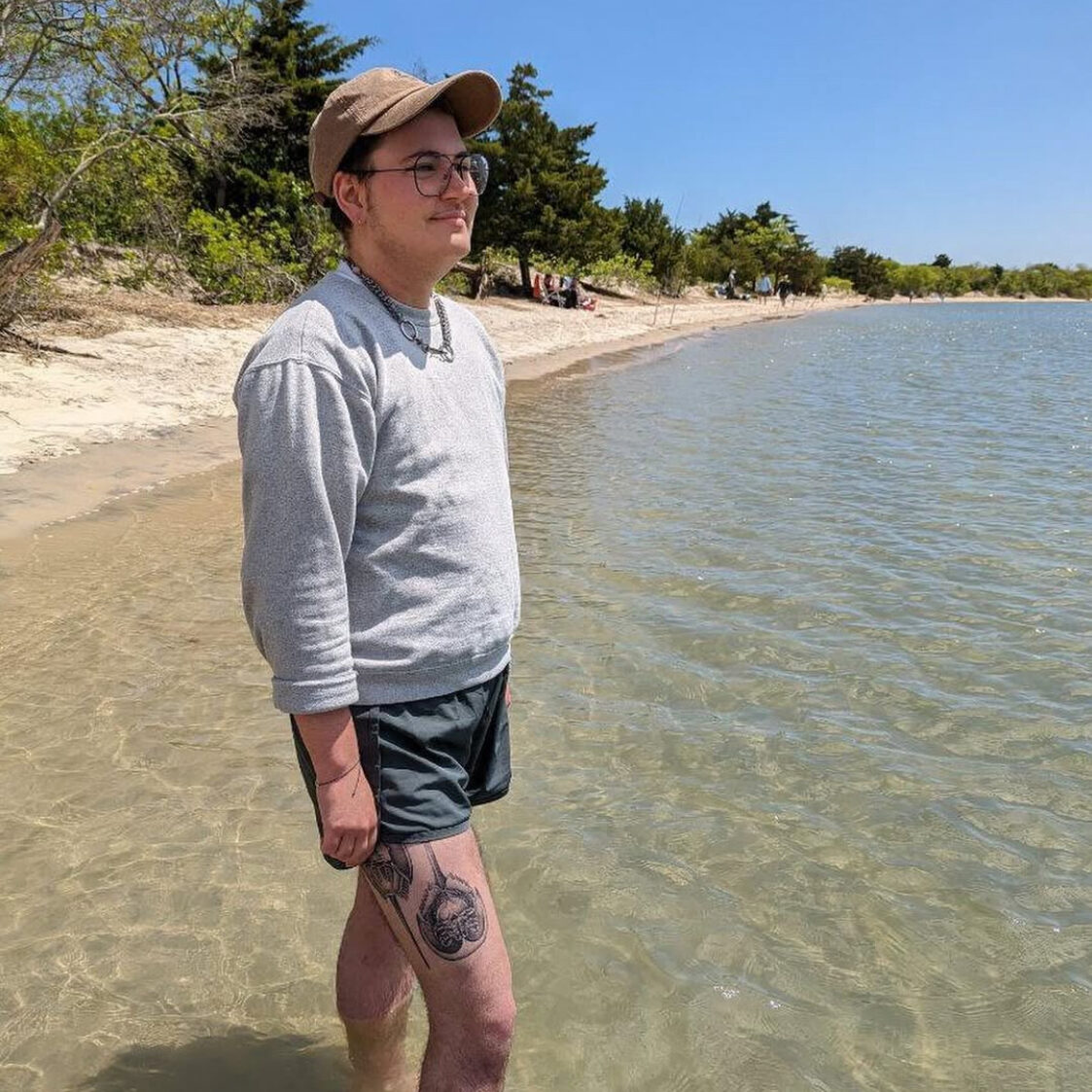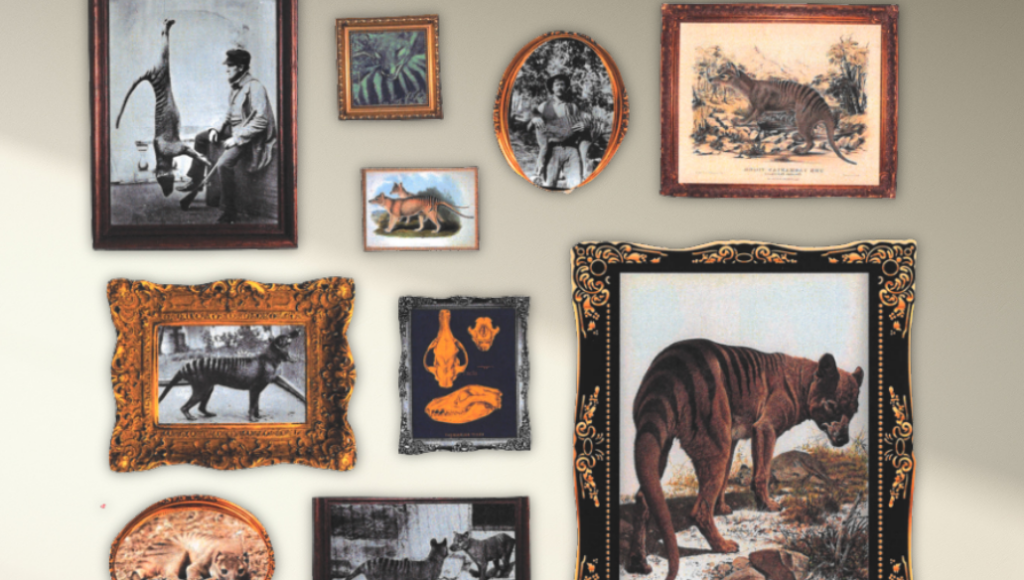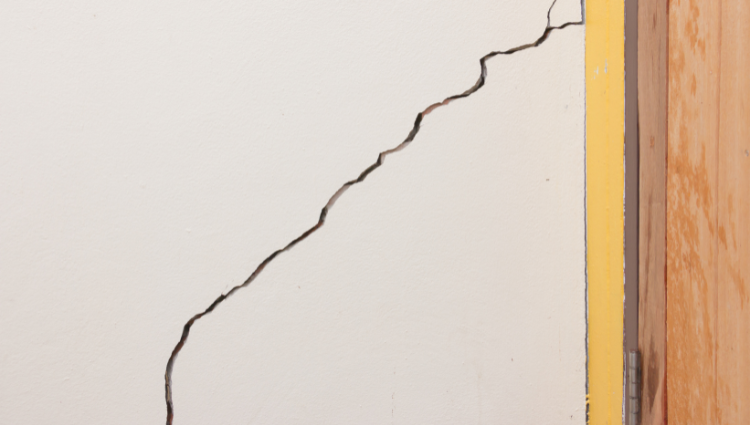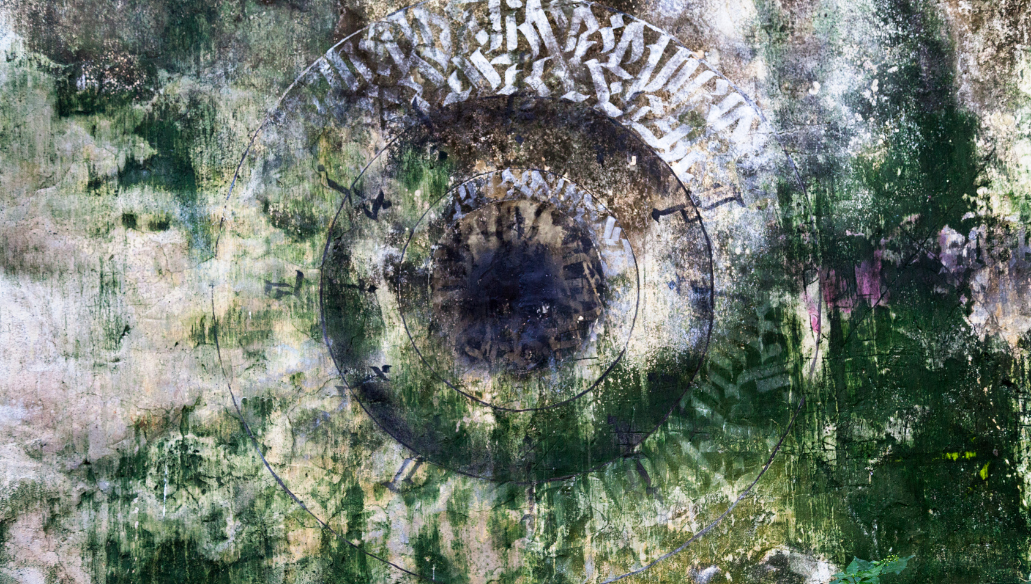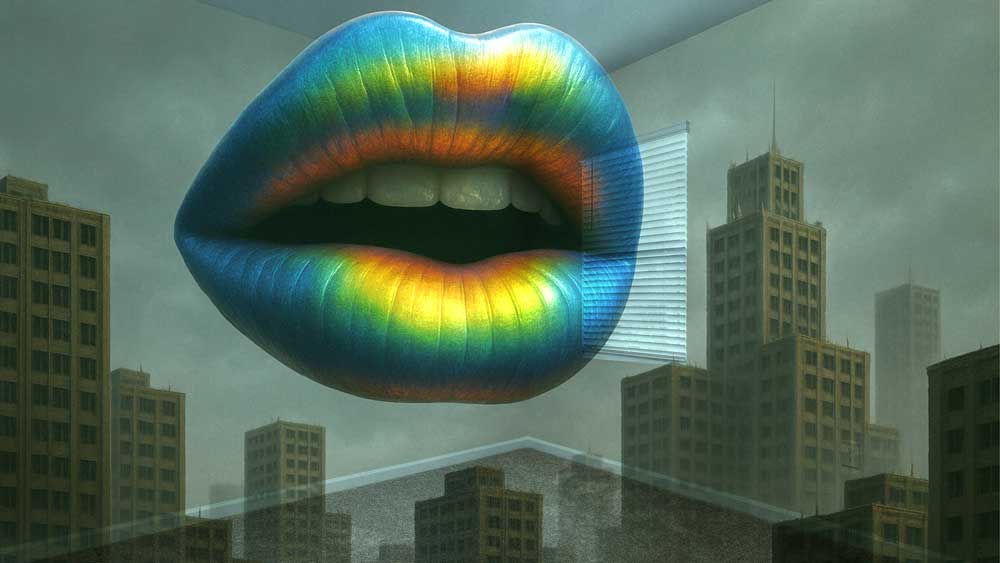Editorial Note: Luke Sutherland was a finalist for our Editors-in-Chief position for our 2025 Community Anthologies. We invited our finalists to write a short piece on the topic of their proposed anthology. Below, get insight into “On Animals,” the anthology topic that Luke had proposed for their Community Anthology.
Human hands slap at the flimsy fencing of an enclosure. The animal sniffs at them, slinks towards the camera, and then paces back again. It has a canid body plan, but with quirks: eyes set wide in a wedge-like head; thick stripes banding its rump; a tail that extends stiffly from its spine. Then there is its mouth — yawning, the jaw splits open further back than it should, teeth framing a too-long palate. The animal is familiar and yet unlike anything else. When it eats, it pins down the meat with one paw, as a dog might. It squints in the light. Between its legs, a pouch sags with a joey.
As viewers, we can’t hear the rattle of the fence or the camera. We can’t feel the resonant scrape of its nails against the bare pavement, smell its sun-hot fur. In fact, we can’t hear the thylacine at all — there are no recordings of its voice. The only videos that do exist are all silent. Cobbled together, they amount to five minutes of footage. I rewind them over and over. My eyes, peering at the animal a near century later. The animal, pixelated by digitization and death.
Animals have always haunted human art, but that haunting takes on a different quality when we understand ourselves to be the executioners. The last known thylacine died at the Hobart Zoo in 1936. That hasn’t stopped people from searching. Entire subcultures have congealed around the possibility that survivors are still stalking the shrubs, grainy clips canonizing them into modern cryptids. It’s easy to fall into such a Lazarusian dream — perhaps they really did go the way of the coelacanth, disappearing into some dark corner of the landscape. Perhaps I don’t need to rewind. Perhaps there is nothing to contend with at all.
Is this grief? Is it guilt? Either way, we can’t help but put it into words.
I want to know why we write about animals, and how. There’s no shortage of them in our canons; one thinks of Kafka’s and Aesop’s menageries, of Orwell’s farm, of ancient pig paintings on cave walls. Our figuration of them is often fabulistic, a stand-in for a moral lesson, and usually with a limited inner life. This is how we talk about being human — by tessellating ourselves through the minds of others who are sometimes too much (and sometimes not enough) like us.
What exactly is an animal, in the world and on the page? Where is the line between one animal (non-human) and another (human)? Can we even find that line — and would it matter if we did?
Western thought has spent centuries shifting the criteria, for better or for worse, and our literature reflects these fluctuations. In the last decade alone, there have been Ray Naylor’s cephalopod societies, Henry Hoke’s genderqueer lion, Ted Chiang’s precocious parrot. Chiang in particular questions why the search for intelligent life always looks outward, to the stars, when non-humans are already right here. The issue of intelligence — scientifically, philosophically, and literarily — is not only in recognizing the intellect of other species, but in accessing it to begin with. After all, the problem of animal minds is the problem of other minds writ large.
Austro-British philosopher Ludwig Wittgenstein said, “If a lion could speak, we wouldn’t understand him.” This might be true, at least in the sense that many people would not even try. But what does Wittgenstein presume here? The demand that The Animal speaks the way that we do. The certainty that its perspective would be utterly untranslatable. In this estimation, The Animal can only ever be Other.
Is it so difficult to imagine we could understand each other, if the conditions were right, if we really listened?
Animals have narratives all their own. A species itself is a kind of story, as Lydia Pyne has written, one with a beginning, middle, and end: extinction. There is an afterlife too. Thylacines live on in a way they may not have had we not killed them. How would we talk about thylacines if the YouTube cryptozoologists were right, or if they never disappeared at all? Since we can only write from the present, our age of mass extinction and climate collapse, it should be no surprise that animals have become avatars for our ecological grief, icons of the Necropastoral. But what does our written testament do for animals? For ourselves?
More questions: In this story — the story of the so-called Anthropocene — who gets to be a character? Who gets to act and who gets to react? Who is just a plot device? In essence: what do we ask animals to do, as writers?
We cannot write ourselves out of ecocide. In some ways, writing has played a supporting role in getting us here. Too often we’ve attempted to replicate the colonial fantasy of a natural world discrete from humans. Indeed, to call something “natural” as shorthand for goodness, purity, and worth is a fascistic impulse. We see this not only in regards to climate, but also in the political violence of forced birth, criminalized transition, and the unfettered transmission of diseases. The category of human is not as stable as we would like to think; the State takes it from many of us on a daily basis.
This is what I think of when I read nature writing: Who is allowed to be human, and who is not? This is more than just the stuff of literary criticism. It is the basis of genocides the world over.
I watch the thylacine through my screen. I write about it here and, in a small way, it lives again. I don’t have other options. I would like to write about animals in a way that opens up the possibility for relation. Communion, we might call it.
A final question: When we like a story, when we find it to be affecting, to touch a nerve, or to say something true, we sometimes describe it as human. What, then, would it mean to call a story animal?
